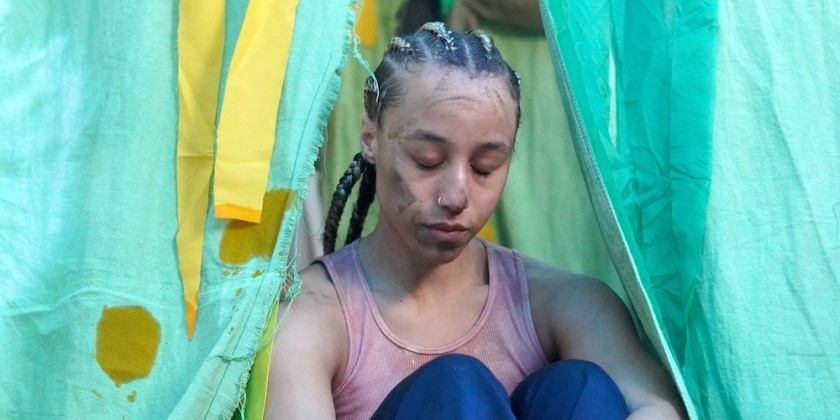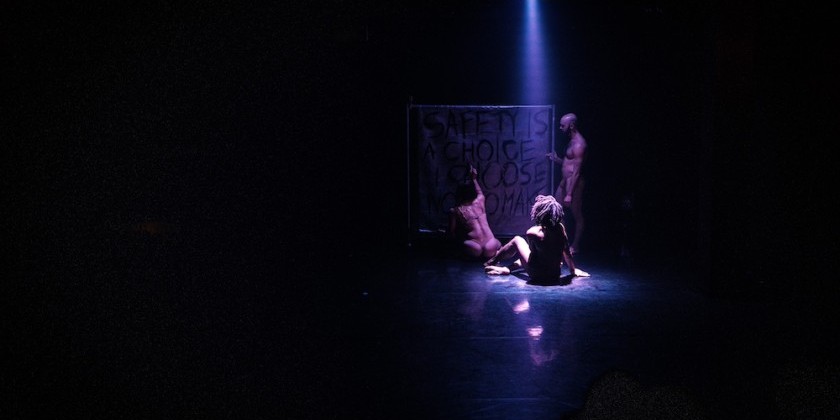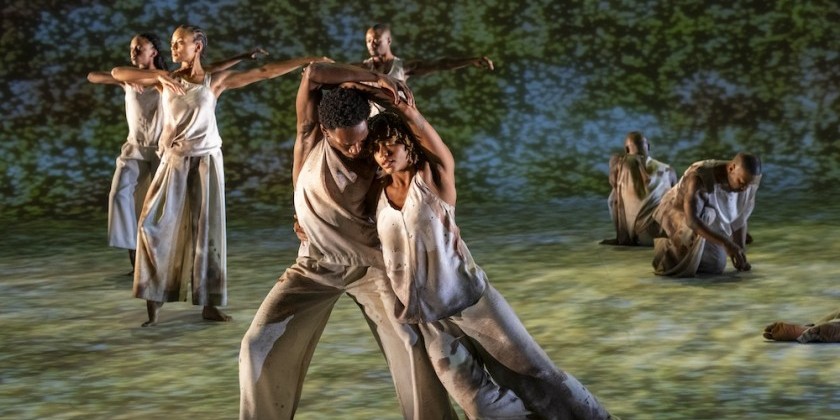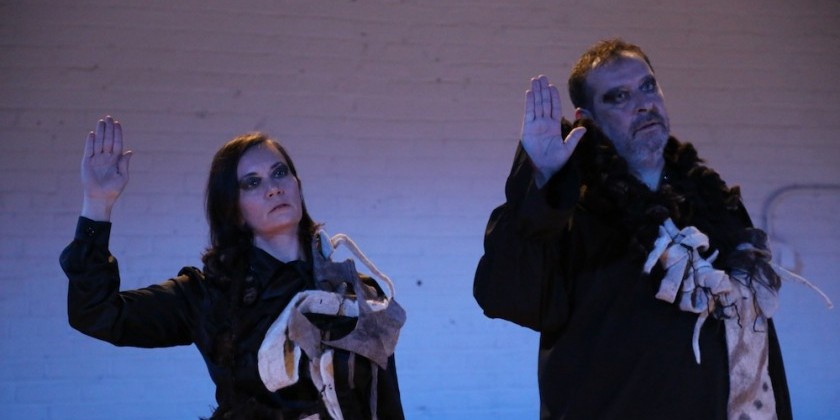IMPRESSIONS: Kimiko Tanabe “Portrait of Myself as a Yūrei” at Triskelion Arts

Created and performed by Kimiko Tanabe
Lighting Design and Technical Direction: Anthony Fernandez
Video Design: Mac Ross
Music: Patrick Shiroishi, Bing Crosby and The Andrews Sisters, Quad City DJs
What do we carry from our ancestors? How do we bear our intergenerational burdens? How can we lighten our loads without forgetting? Kimiko Tanabe approaches these questions through a layering of history, folklore, catharsis, and prayer in “Portrait of Myself as a Yūrei,” a 50-minute solo that channels the many expressive facets of her heritage and artistry. Through a series of interconnected vignettes, Tanabe plumbs the aftereffects of Japanese American incarceration during World War II, interrogating both past and future repercussions through a broad emotional palette.
The titular yūrei is a female ghost-like figure in Japanese folklore, one who haunts because she is haunted—by rage, sorrow, pain, and revenge. Tanabe approaches the yūrei slowly, first by showing us herself in a meditative “polite dance” full of gentle balances, soft angles, and turning palms that build and recur with relaxed precision. She carves space with measured tenderness, finding focus and stillness, her beauty contained, bathed in soft light and bird song. The black text on her white t-shirt reads “1942,” the year President Franklin D. Roosevelt issued an executive order establishing internment camps that would confine over 120,000 people of Japanese descent, some two-thirds of them native-born U.S. citizens.
As her dance settles to a close, Tanabe becomes a spectator of herself, watching a film of a “Japanese Relocation” wartime propaganda film projected onto her torso. This projection-within-a-projection deepens the sense of isolation and estrangement while driving home the personal, embodied manifestations of historical injustice and political violence. On screen, Tanabe is trapped, immobilized, and visibly uncomfortable, the grainy black and white film distorted by her form as a confident male voice espouses the merits of the internments and the U.S. government’s “real consideration for the people involved.” It is from this material that the yūrei is conjured.
Tanabe’s supernatural transformation unfolds against the echoing dissonances of Patrick Shiroshi’s score and the hypnotic play of light and shadow of projected silhouettes—hair, hands, face, and torso floating in gravityless slow motion. In Japanese folklore, the yūrei is distinguished by pale, limp hands and long, dark hair that covers her face. Stripped of her white shirt and pants, Tanabe kneels atop a tall stool, rising slowly to stand and descend to the floor, all the while doubled over with her loose hair obscuring her face. Gone are the harmonious geometries of her “polite dance,” her limbs dangling and twitching into distorted angles, fingers and toes gnarled as she creeps blindly around the stage with delicate precarity and ominous weight, all the while seeking something unspeakable in the darkness.
The ensuing scenes translate the yūrei’s folkloric origins into various human apparitions, which Tanabe accomplishes with abrupt transitions that jar the viewer’s attention while deftly unspooling a narrative and emotional thread. One scene gives us Tanabe as a sultry pinup girl in lurid purple light, her piercing, confrontational gaze a grotesque flirtation that underscores the bitter irony of her musical backdrop: Bing Crosby and The Andrews Sisters’ 1944 rendition of Cole Porter’s “Don’t Fence Me In.” Next, she is a broken doll, bearing vestiges of the yūrei, channeling trauma through the untold suffering of repression and dementia, her face contorted in a confused grimace of disjointed pain. And in a wild, jerking dance that is anything but polite, she flails desperately to booming bass under a disco ball’s lights, only to end doubled over again, head in hands.
These seemingly disparate scenes build to a quiet, stunning revelation. Tanabe unfurls the gauzy white fabric backdrop to cover the stage, then slips behind the curtain in silence. The light slowly shifts and a world appears, seemingly out of nowhere, but as if it has always been there. It is a world apart, its hazy depths a dream seen through the fabric’s translucence: colorful paper cranes hang from delicate trapezes, tiny lanterns glint above a cherry blossom tree. It has the feeling of a shrine, a sacred personal space in which Tanabe kneels with the slow, graceful gestures of prayer. This is a private realm of memories too deep to recall, tinged with the magical work of reparative imagination. Amid the lofted world of her tiny cranes, Tanabe climbs a pole to unfurl soft, graceful shapes, morphing and melting around a smoothly spinning center—a kinetic continuation of her prayer. The soundscape builds as she revolves with growing intensity, layering natural sounds with haunting woodwinds, muffled snippets of narration, crackling bursts, soft chimes, deep breaths, and rumbles of thunder. It is here that Tanabe becomes fully herself, suspended in her surrender, empowered by her freedom, defiant and strong. Her spirit, her yūrei, is released, but not forgotten.





![IMPRESSIONS: [RE]DEFINING [SPACE] at Triskelion Arts](/images/features_small/3_Trisk_day_3_selects_by_caroline_alarcon_loor_064.png)







